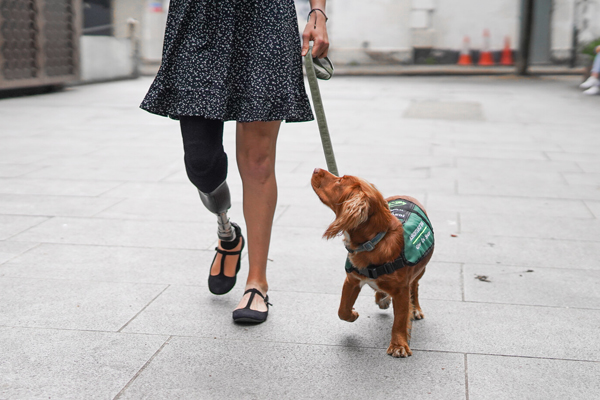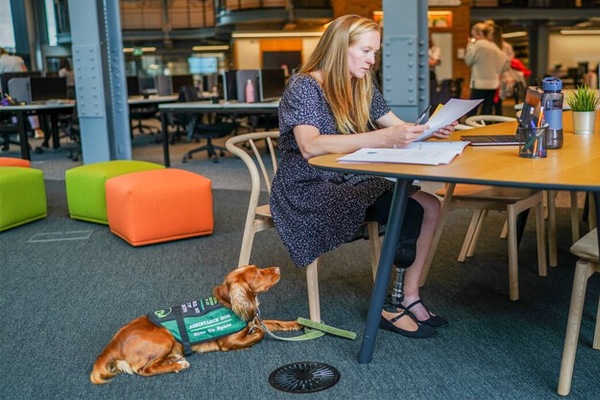The Business Disability Forum (BDF) has published a series of short guides offering advice to employers on how to support disabled employees who need to bring animals to work.
‘Guide dogs, assistance animals and emotional support animals’ explains the different types of animals that many disabled people rely on in their daily lives. The guides also cover what employers need to consider when making decisions around animals in the workplace.
“We know that animals can offer vital assistance and support to many disabled people in the workplace,” stated Bela Gor, Head of Legal at the Business Disability Forum. “For employers, however, there are legitimate concerns about the impact of different animals on other employees and the wider business. Our guide explains what businesses need to know in order to be able to make reasonable adjustments around animals and make sure all employees feel supported at work.”

FIVE TIPS ON ASSISTANCE ANIMAL SUPPORT
BDF offers the following five top tips on how to support employees with disabilities who need to bring assistance animals to work:
1. Employers must make reasonable adjustments to support employees who need guide dogs, assistance animals and emotional support animals.
2. In most workplaces, it will be reasonable for employers to let an employee bring in their guide dog or assistance animal – as long as the animal is quiet, well-behaved and not disruptive and the workplace is a safe environment for the animal.
3. Emotional support animals are likely to be reasonable if guide dogs and assistance animals are – but if it is an unusual type of animal (not a dog), consider its impact in the workplace before permitting it.
4. Work with the disabled employee’s colleagues so that they are not disrupted by the presence of an animal in the workplace. Cultural or religious objections to certain animals are not usually enough to justify refusing entry to the animal but there might be people with allergies or other disabilities who need to be accommodated as well. There–is likely to be a solution that will work for everyone.
5. Most adjustments to allow guide dogs and assistance animals into the workplace are relatively cheap and simple – for example, putting out a bowl of water and making a space by the employee’s workstation for the animal to sit.
The new guide is part of Business Disability Forum’s free Disability Essentials range. Go to Business Disability Forum’s Disability Essentials page to view the ‘Guide dogs, assistance animals and emotional support animals’ series.






































